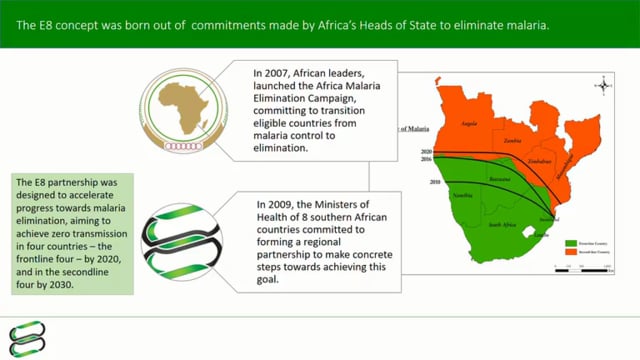Last Updated: 25/08/2024
Malaria Border Posts (Malaria Health Posts on Resident, Mobile and Migrant Populations in E8 Border Districts)
Objectives
The primary function of the border health facilities is to increase awareness about malaria and to improve access to health care, particularly malaria diagnosis and treatment amongst underserved communities in border districts, and amongst mobile and migrant populations crossing these borders.
Research objectives:
- To assess knowledge of malaria transmission, attitudes towards border posts and health facilities, and practices for malaria prevention and treatment among migrants and residents of border district communities;
- To understand the characteristics of populations in areas surrounding the malaria posts, including current community infection prevalence, zero-prevalence, and confirmed case incidence of malaria;
- To understand the characteristics of migrants and other mobile populations in E8 border districts, risk factors, and migration patterns;
- To assess the role of parasite importation on malaria transmission within border districts; and
- To evaluate the impact of two years of border area health post-implementation on malaria transmission and importation rates
E8 countries are collaborating across their borders to expand access to timely diagnosis and treatment for mobile and migrant populations moving across the region’s porous borders, in so doing, draining potential transmission reservoirs that support malaria importation across borders. A total of 50 mobile malaria posts and surveillance teams are being deployed across the borders of the E8 countries, with the goal of (i) providing early care to malaria diagnosis for travellers and underserved border populations, and (ii) tracking high-risk populations and malaria risk in order to inform appropriate strategies to limit cross-border transmission. Modelling analysis combined with informant interviews has been used to estimate the optimal locations for the deployment of the units, in an attempt to maximize the intended impact of draining sources of infection.
The following units are being deployed across the E8 borders between March and August 2017:
- The “malaria plus” post will offer a more comprehensive package of primary health care services, and will be modelled after the primary health care facilities in the country where they are located. These are intended to provide services to both underserved resident populations and mobile and migrant populations (MMPs) in the respective border towns.
- The “malaria basic” posts are intended to provide care using more of a mobile or outreach model; these are aimed at providing services to mobile and migrant populations, and will be strategically placed in areas that are frequented by MMPs, such as bus stations, near border crossings (formal and informal) and shopping centres or markets.
In conjunction with the diagnosis and treatment activities, the project will include a program of active surveillance in order to proactively diagnose and track potential infections that are not presented through the passive surveillance system – that is, in the health facilities. Active surveillance is a key element of the elimination strategy, as it supports the identification of potential reservoirs of infection in the population that contribute towards ongoing transmission in the identified border areas.
Border health post districts in E8 countries:
- Angola: Calai, Cuangar, Tombwa, Namacunde, Ombandja and Dirico
- Namibia: Andara, Eenhena, Engela, Nankudu and Outapi districts
- Botswana: Bobonong, Ngamiland West (Okavango) Chobe and Masungu (North East) Districts
- Zambia: Livingstone and Sesheke districts
- Zimbabwe: Beitbridge, Chiredzi, Mutasa, Mudzi and Rushinga districts
- South Africa: Enhlanzeni, Vhembe and Mopani districts
- Mozambique: Changara, Mossurize, Manica, Sussundega Namacha, Matutuine and Moamba districts
- Swaziland: Lubombo and Lugongolweni districts.
Mar 2017 — Sep 2018


